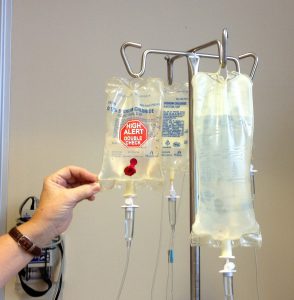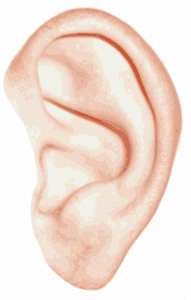May is National Neurofibromatosis Month. Neurofibromatosis is a set of complex genetic neurological disorders that affects the development and growth of nerve cell tissues. Tumors grow on nerves in the brain and throughout the body, and while some are harmless, others can lead to serious damage. Unfortunately, there is no known cure for this disease. However, there are treatments that can help manage symptoms and relieve pain. Many people have never even heard of this debilitating disease, so today we will focus on what it is, the 3 types of it, their symptoms, its treatment, and why it is so important to do more research to find a cure.
Neurofibromatosis Type 1 (NF1)
Historically called von Recklinghausen disease, this is the most common of the 3 types of neurofibromatosis, occurring in 1 in 3,000 births. The majority of people who have this type of NF inherit the gene from their parents, although approximately 30-50% of cases are due to a spontaneous genetic mutation in the NF1 gene. A child with an infected parent has a 50% chance of inheriting the genetic mutation.
Symptoms

NF1 affects the nerves of the outer part of the body (peripheral nervous system), mainly the skin. In most cases, the symptoms are mild and allow patients to live healthy lives. However, in some cases, the disorder can be life-threatening. Symptoms doctors will look for include:
- 6 or more birthmarks that are light brown-colored. They usually appear around age 9 and measure anywhere from 5 mm or more in children and 15 mm or more in adolescents and adults.
- Neurofibromas, or 2 or more soft, pea-sized bumps. These are tumors that involve multiple nerves and can be present at birth, or they might not become noticeable until years later. These tumors can affect the brain or spinal cord and can grow on nerves of the eye, which can interfere with vision. Most tumors are benign, but some can become cancerous.
- Freckling in the groin or armpits. These freckles usually appear around the ages of 3-5 and are smaller in size than the light-brown colored birthmarks previously mentioned.
- Lisch nodules in the eyes. These are small brown tumors that appear on the colored part of the eye, or iris. The nodules are usually harmless and do not affect vision.
- Bone deformities. Abnormal development of the eye socket or tibia can occur in NF1 patients.
Other signs and symptoms include:
- Cardiovascular complications, such as high blood pressure, heart defects, and blocked or damaged blood vessels.
- Behavioral issues, such as ADHD.
- Scoliosis, or curvature of the spine.
Treatment

NF1 cannot be cured, but there are treatments that can help manage symptoms. People with Neurofibromatosis Type 1 have to be evaluated periodically by a specialist, even if they are not experiencing symptoms. Treatment includes:
- Surgery to remove tumors or correct scoliosis or other bone deformities.
- Radiation can shrink tumors and get rid of cancer cells.
- Chemotherapy can be used to treat eye tumors or brain tumors.
- Medications for headaches and seizures.
Neurofibromatosis Type 2 (NF2)
This type of Neurofibromatosis occurs significantly less often than does NF1, occuring in 1 out of every 25,000 births. Approximately 50% of affected people inherit it through family, while others get it through a genetic mutation in the NF2 gene. The child of an affected parent has a 50% chance of inheriting the gene. NF2, also known as bilateral acoustic neurofibromatosis, mostly affects the central nervous system, causing tumors of the brain and spinal cord.
Symptoms
People with NF2 can develop numerous symptoms, including:
- Cataracts– people with NF2 can develop vision problems like cataracts at an earlier age than is usual.
- Hearing loss or ringing in the ears– tumors can develop on auditory nerves and can lead to progressive hearing loss as the tumors grow. This is the most common first symptom of NF2.
- Peripheral neuropathy– people with NF2 may develop problems with nerve function, usually numbness and weakness in both the arms and legs.
Teenagers and adults are often seen for hearing and balance problems, while young children with NF2 normally seek medical attention because of vision problems.
Treatment

NF2 cannot be cured. After MRIs reveal tumors, it can be treated with:
- Surgery to remove tumors, depending on the size and the extent of hearing loss.
- Cochlear implants, which can be placed in the inner ear to improve hearing if hearing is completely lost after removing a tumor.
Schwannomatosis
Scwannamatosis is the rarest form of Neurofibromatosis, affecting 1 in 40,000 people. The genetic cause of Schwannomatosis is unknown in some people.
Symptoms
The symptoms are similar to NF2 symptoms, because both include slow growing tumors of the spinal, cranial and peripheral nerves. Some people with this form of NF will have tumors limited to one part of their body, such as an arm, leg, or part of the spine. Symptoms include:
- Chronic pain anywhere on the body.
- Numbness, tingling, or weakness in the fingers and toes and/or loss of muscle function.
Treatment
Unfortunately, there is no accepted medical treatment for schwannomatosis, although surgery can help with growing tumors. Doctors will first determine if the potential benefits of surgery outweigh the risk of nerve damage.
NF is a rare condition, and researchers are working to better understand it. Currently there are clinical drug trials being conducted, as well as genetic studies to figure out the best treatments. With continued studies, researchers are hoping to find a way to control the growth of tumors, as well as develop new drugs and therapies for treatment. While there is still no cure, with the proper diagnosis, treatment, and regular monitoring of symptoms, most people with Neurofibromatosis can live a long, healthy life.  NF requires a continuous monitoring of symptoms, as well as blood work, MRIs, and possible surgeries. In addition, people living with Neurofibromatosis often experience emotional and psychological issues, requiring counseling. This can be a financial strain for many families. One thing they should not have to worry about are the medical bills that can come with a chronic condition. EZ can help find a comprehensive plan that fits your budget, at no cost to you. Health insurance should protect your family and ease your mind, not stress you out. Get free quotes by entering your zip code in the bar above, or to speak to one of our local licensed agents, call 888-350-1890.
NF requires a continuous monitoring of symptoms, as well as blood work, MRIs, and possible surgeries. In addition, people living with Neurofibromatosis often experience emotional and psychological issues, requiring counseling. This can be a financial strain for many families. One thing they should not have to worry about are the medical bills that can come with a chronic condition. EZ can help find a comprehensive plan that fits your budget, at no cost to you. Health insurance should protect your family and ease your mind, not stress you out. Get free quotes by entering your zip code in the bar above, or to speak to one of our local licensed agents, call 888-350-1890.